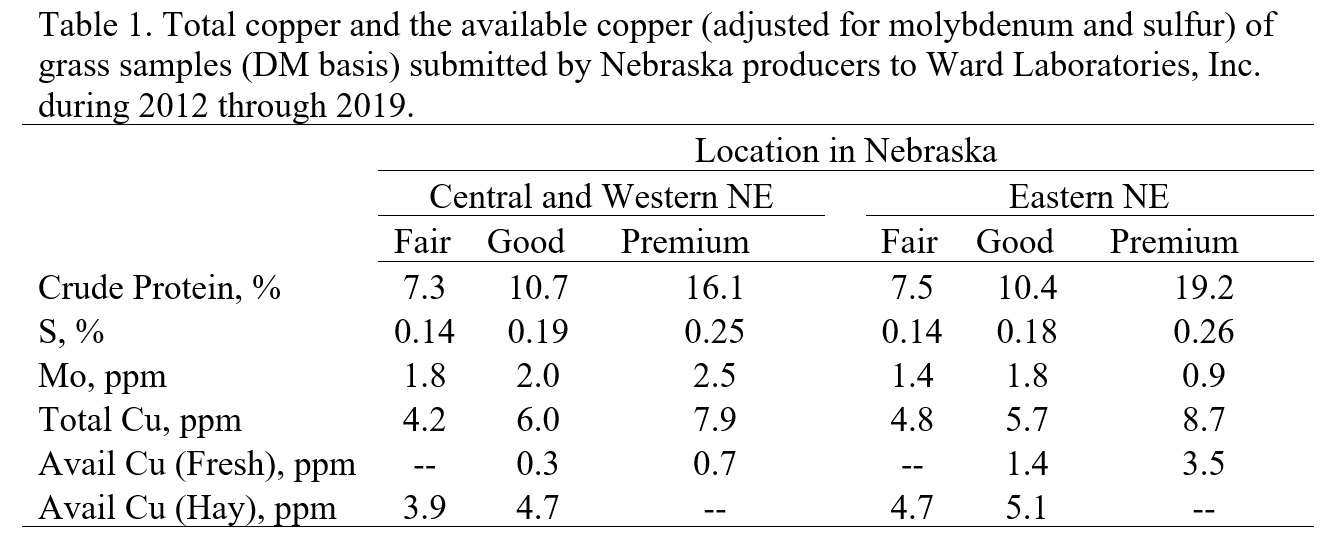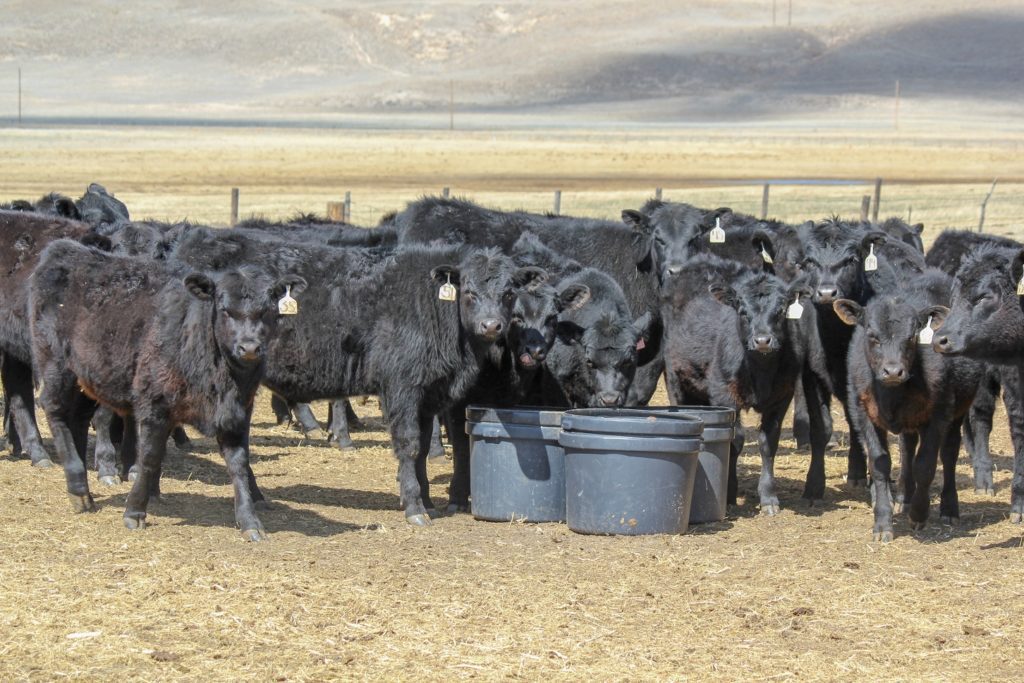Copper (Cu) deficiency in cow/calf herds has been associated with increased rates of diarrhea and reduced calf growth. Forages do not provide enough copper to meet the needs of beef cows and calves, thus supplementation is needed. However, it is important to note that both under and over supplementation can have negative effects on calf performance.
The natural question is “how much copper” needs to be supplemented? The goal is to provide enough copper to meet needs of cattle without feeding more than needed. Last year, four groups of weaned calves were bought from the sale barn in Valentine, NE and had their liver copper concentrations tested. Of these, one group had deficient liver copper, two were in the adequate range and one group was in the toxic range. It appears that two herds supplemented “just right” or the “Goldilocks amount” while one was not feeding enough, and another was supplementing too much. Do you know where you stand with your supplementation program?
Forage and water testing can provide some guidance. Currently, it is suggested to target 10 parts per million (ppm) of copper in the diet of cows and calves. However, looking only at copper content in the forage will not give you an accurate understanding of the amount of available copper or how much supplemental copper is needed. One must also look at the sulfur and molybdenum content as well. Molybdenum (Mo) and sulfur (S) are two minerals that act as antagonists, tying up copper and making it unavailable to the animal.
Table 1 shows the total copper and the available copper (adjusted for Mo and S) of grass samples submitted by Nebraska producers to Ward Laboratories, Inc. from 2012-2019. In general, the amount of copper and its antagonists increases with quality (crude protein content) of the forage. Samples from Western and Central, NE (including the Sandhills) were similar and had enough Mo and S to tie up almost all the Cu in pasture. Eastern NE had lower concentrations of Mo resulting in more available Cu. The same level of Mo and S in pasture has more of a negative effect on copper absorption than in dry hay. Given typical sulfur content of fresh grass in Nebraska, the amount of copper needed is increased by 6 to 8 ppm for every additional ppm of molybdenum above 1 ppm in pasture.
Although variable, vegetative pasture in Western and Central NE typically contain enough S and Mo to make the majority (95%) of copper in pasture unavailable for absorption. Thus, at a minimum, supplementation of the full requirement (1,300 ppm in a 4 oz. mineral) is often needed to meet needs. In Eastern Nebraska, the Mo content of pastures appears to be less, resulting in 65 to 90% of the requirement needing to be supplemented (1,000–1,200 ppm in a 4 oz mineral). There can be significant variation in mineral content of forages by location and management; thus, testing your own forage can be beneficial to refine supplementation. While testing does cost time and money, it can save money in the long run through a more targeted mineral program.
One should also keep in mind that water can also be a source of S, and if the water source is high in sulfate (600 ppm or greater) then additional supplemental copper will be needed. Similarly, due to the higher S content of distillers grains and corn-condensed distillers’ solubles (often called syrup), extra copper may also be needed when feeding diets containing significant amounts (more than 7 lbs of DM from distillers or 2 lbs of DM from syrup) of these products. It is important to note that the typical lower levels of supplementation of these products provided to cows on dormant range/hay in the winter would not have a significant impact on copper needs. In high S (0.3% S or greater in the diet) and Mo situations, a 4 oz. mineral may need to contain up to 2,500 ppm of copper.
Testing your forage and water to account for Mo and S can be a great way to refine your supplementation program and make sure you hit the “Goldilocks range” of supplemental copper. Looking to refine your mineral program? Check out our new Nebguide: Formulation Considerations for Mineral and Vitamin Supplements for Beef Cows

Source:
Mary Drewnoski, Nebraska Extension Beef Systems Specialist
Photo Credit: Troy Welz








